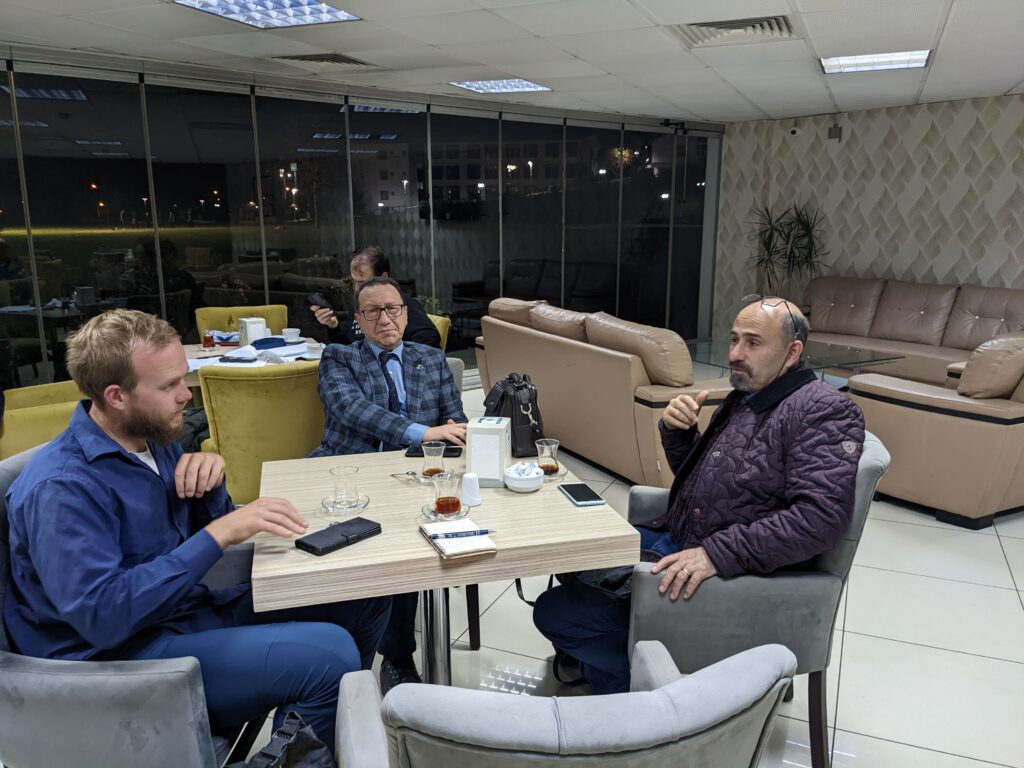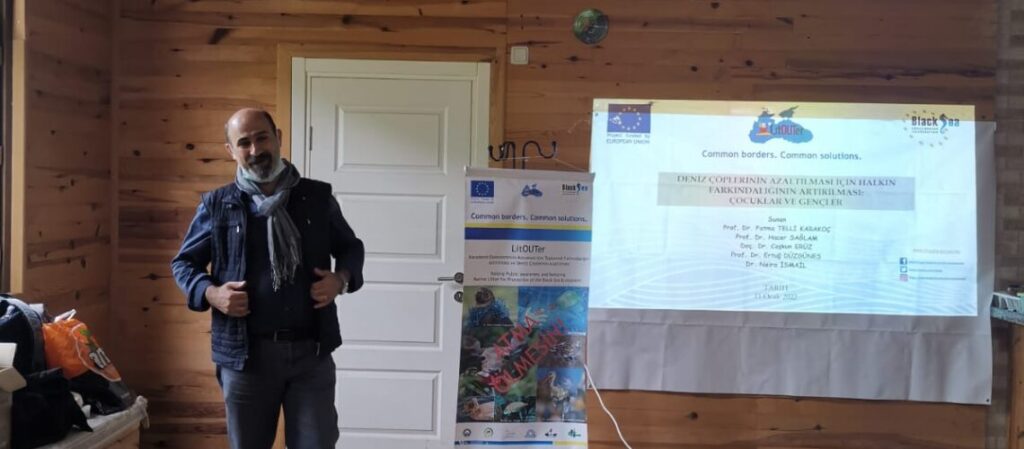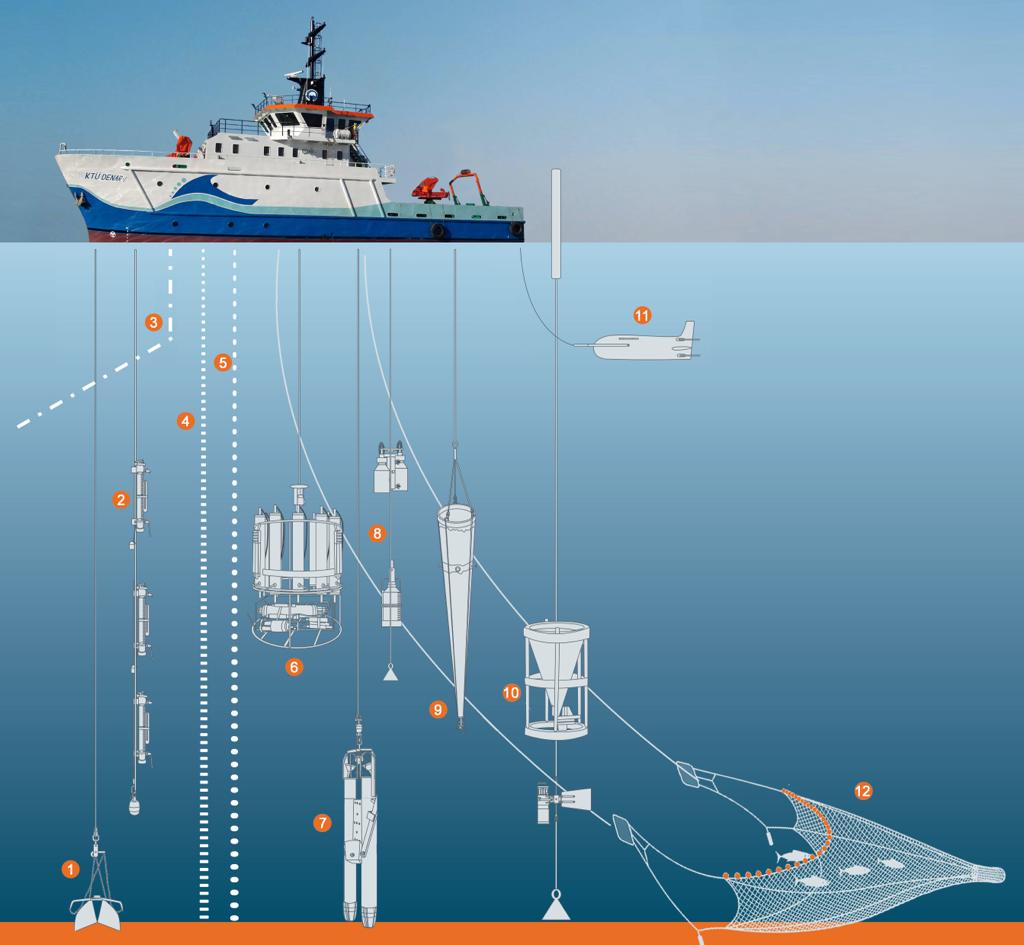What do the oceans and seas mean to us humans? People living far away from them might associate them with a holiday destination, scenic beaches or uncolonized, wild territory. For the population living on their coastlines, their livelihoods are tied to these waters. Oceans feed them, provide them jobs in fishery, shipping, trade and tourism and represent an important place for recreation. In fact, around 70 % of our planet is covered by oceans and thanks to us humans, marine litter is widespread almost everywhere.
The Black Sea is one of the world’s most isolated seas, and the largest anoxic body of water on the planet (87% of its volume is anoxic). It has also been called Europe’s most polluted sea. In Trabzon along the Turkish Black Sea coast, we sat down with researchers Dr. Muzaffer Feyzioğlu and Dr. Coşkun Erüz from the Karadeniz Technical University to discuss the state of marine conservation, microplastics and people’s attitudes towards marine litter.
Humans and oceans are interconnected
In fact, oceans don’t only affect people who live nearby them. They regulate our climate and generate most of the oxygen we breathe. Not to mention, they also serve as the base for much of the world’s economy. However, we have an alarming impact on them.
The Black Sea itself has been affected by severe environmental degradation. In 1995, it was rated with the highest concerns in five out of seven environmental categories, making it the European sea in the worst state. For decades, it has also been treated as a dumpster for agricultural and industrial waste from Eastern Europe, and a few decades ago, about 40.000 km² of the Black Sea were considered dead – an alarming fact not only for marine life but also for humans who depend on it. But having hit rock bottom, is Europe’s most polluted sea finally cleaning up its act?
Dr. Muzaffer Feyzioğlu dean of the faculty and Dr. Coşkun Erüz, associate professor from the Faculty of Marine Science, have been studying the Eastern Turkish Black Sea region for decades. One of their main research focuses is marine litter, including the abundance of microplastics and nanoplastics – the invisible polluters. Although their research has faced them with many shocking discoveries, they still say there is hope. Their joint international EU-funded project with Georgian, Romanian and Bulgarian experts aims to fight the overall marine pollution of the Black Sea. The project is named ‘Raising Public Awareness and Reducing Marine Litter for the Protection of the Black Sea Ecosystem (LitOuter)’, and tackles the problem of marine littering through the combination of research and education.

But where does marine litter originate from and how bad is the pollution?
About 80 % of the debris found in the marine environment comes from land-based activities. However, marine litter doesn’t only come from activities along the coastline or in the vicinity of the sea. Rivers, floods and even wind transport litter from far away into the sea, not to mention water transport, fishing, the sewage system and various off-shore activities such as oil rigs all contribute to polluting our seas. Particularly in the case of the Black Sea, land-based activities generate significantly more marine litter than maritime activities.
The studies across the Black Sea show plastics make up 80% of the waste. However, the project´s pilot studies in Trabzon province surprise even the most experienced scholars. Muzaffer, Coşkun and their colleagues found 2,500 pieces of waste in an area of only 500 square metres! Apart from plastic bottles, bags as well as face masks, bottles of colognes and hand sanitizers were collected. Coşkun tells us that they are now modelling the currents and thus are able to identify the main pollution routes from rivers into the sea and within.
No overnight solution
The first Turkish marine litter research along the Black Sea coast was started in 2004 by the Karadeniz Technical University, local governments and NGOs. Since then, the university has carried out a thorough survey on marine biodiversity and marine litter in the Eastern Turkish Black Sea coast. In response, adequate legislation was created regulating water, air and plastic pollution, but unfortunately there is nobody to enforce it. The results of these projects showed that the litter problem must be tackled from several fronts. Almost 20 years after the first findings, experts are now working on identifying the exact degree of the pressure coming from different sources (i.e. rivers, tourism, shipping, fisheries, industry). But furthermore, they realised that the best way is prevention. The mindset of locals has to shift, starting from the youngest generation through housewives and fishermen to decision makers.
We have one world, one atmosphere, one water
Along our route through Turkey, we have been confronted with litter almost everywhere, and influencing people’s behaviour is not an easy task. However, Coşkun is confident.
“We have to be patient, and change people’s minds about littering one step at a time. The main problem is the lack of awareness of proper waste disposal. But we also need a sense of global thinking. We have one world, one water, one atmosphere, and compared to natural processes, our own lifetime is just a glimpse in time. In some way, we are just guests of our molecules, and 70 years later we give them back.”
Dr. Coşkun Erüz, associate professor of the Karadeniz Technical University´s Faculty of Marine Science
The project has already achieved a lot. There have been workshops organised for local communities, convincing them to separate waste at home for further collection and recycling processes and teaching them the benefits of using organic waste as fertiliser in their gardens. Municipalities are being involved to start waste separation and establish recycling plants. And various educational toys and documentaries help to hit the right tone with the new generations, who will soon be responsible for saving their environment.

But Europeans should also not just sit and watch. Marine litter is not only the result of the bordering countries´ activities. But unfortunately, they are the ones that bear the cost of its effects the most. In fact, the catchment of the Black Sea covers an area of 1,874,904 km2 across Europe and Asia Minor and three rivers provide most of the Black Sea´s pollution: the Danube, Dniester and Dnieper. Therefore, what happens along these rivers in many different countries has a strong influence on the health of the Black Sea. Especially when it comes to plastic pollution.
The problem goes beyond what we can see
Muzaffer shows us the new research vessel that belongs to the faculty. The scientists on board spend 10-15 days on the sea, studying plankton and contamination levels. Even several hundred kilometres from the shore, they measured a high concentration of chemicals.

People might think ‘It’s just water, it’s far away from me, it’s not connected to me. But then, researchers find plastic also in mussels and fish, which people are eating on a daily basis. Samples taken from the seafloor and from planktonic organisms also contain microplastics and nanoplastics, which means the issue is not only on the surface, but has already penetrated into the ecosystem. As of now we have no possibility of removing these plastic particles, all we can focus on is harmonised prevention: in coastal countries as well as all countries that are located within the catchment of the Black Sea.
Marine protected areas
To protect and restore the health of our seas, action must start from the land, but also from the sea. The best way to achieve this is the establishment of Marine Protected Areas (MPA): sections of the sea where the responsible government has placed limits on human activity. In Europe, the establishment of Marine Protected Areas has become an increasingly popular tool to protect marine life and by the end of 2016, 10.8 % of the surface of Europe’s seas had been designated as MPAs. In Turkey, Marine Protected Areas have been established on the Mediterranean side, but no specific MPA has been designated along the 1700 kilometre-long coastline of the Black Sea.
To us, the identification of such protected areas in a marine environment seems like a jigsaw. Indeed, the process of identifying and designating such protected areas is a long game. Muzaffer and Coşkun explain that multiple years prior to the designation, various physical, chemical and biophysical studies must be conducted. Throughout their decade-long research, the local team of experts has already proposed 15 areas for protection, which are uniquely rich in biodiversity, host endemic species and are important nursing areas. But whether and when decision makers will take action remains unknown.
“We are scientists. We study, we show, we explain, we are guides for the people. Sometimes decision makers refuse to hear us, but sometimes they listen, and then, processes start.”
Dr. Coşkun Erüz, associate professor of the Karadeniz Technical University´s Faculty of Marine Science


Pingback: Quo vadis, Turkey’s nature? - biking4biodiversity.org